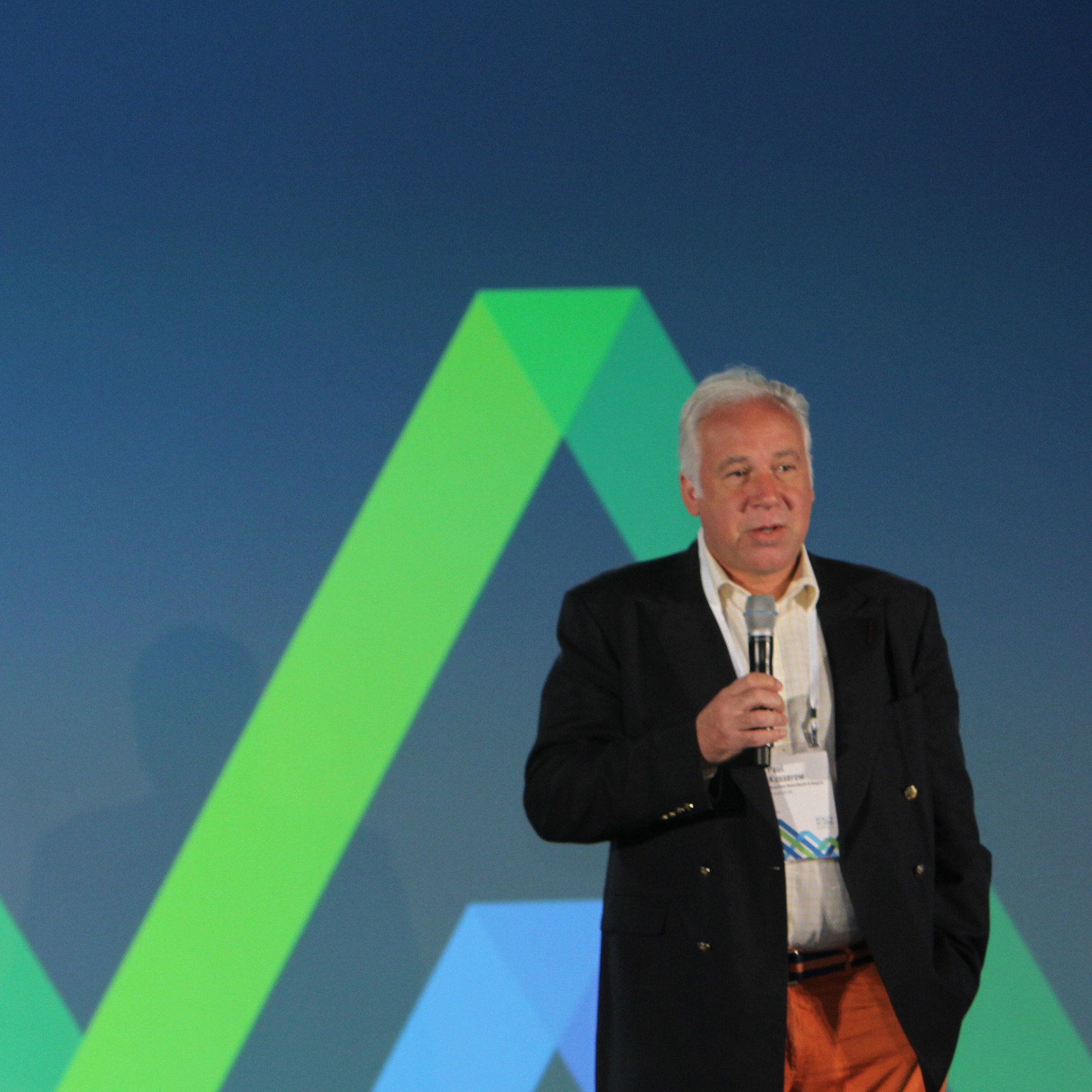Health Evolution CEO Richard Schwartz recently interviewed Paul Kusserow, a distinguished health care executive renowned for successfully leading the transformation of Amedisys during his tenure as CEO. Kusserow’s career spans various sectors within the health care landscape, showcasing his expertise in pioneering strategies in Medicare Advantage and reshaping home-based care delivery.
During the interview, Kusserow shares valuable insights from his experiences at Humana and his role in orchestrating innovative models at Amedisys. His narrative illuminates the transformative impact of strategic leadership on the future of health care delivery.
The discussion between Schwartz and Kusserow explores the challenges faced during the early days at Amedisys. Emphasizing the importance of prioritizing quality care, fostering a dedicated team, and leveraging cutting-edge tools, they delve into the key factors that contributed to the success of Amedisys’ transformation. This conversation underscores the crucial role of strategic leadership in navigating and shaping the evolving landscape of health care.
Richard Schwartz:
Welcome and thanks. Your career spans every aspect of health care, from management consulting to leading strategy for Tenet and Humana, to most recently engineering an extraordinary turnaround at Amedisys. Let’s start with your days at Humana, where you pushed to be an early leader in Medicare Advantage (MA).
Paul:
Thanks for having me. At Humana, I ran strategy, mergers and acquisitions, and innovation. We were just starting to understand what the Medicare Advantage world could be. Luckily, I had a diverse career before I got into health care, including experience in the publishing world at two places with an older readership—Reader’s Digest and National Geographic. There, we built extensive databases to understand our readers’ needs and market to them. But at Humana, I realized we really didn’t know much about our MA customers or how to sell to them.
As such, we started to bring in ideas like lifetime value of the customer and focus on putting together products that are really differentiated and would make customers want to pick an MA plan versus traditional, fee-for-service Medicare coverage.
We learned that, because of the way Medicare Advantage was constructed, it has much more flexibility than fee-for-service Medicare coverage. That allowed us to design plans that were more appropriate for people aging into Medicare. And we learned that if you started to really understand your audience and build plans responsive to that, then competing against fee-for-service Medicare coverage wasn’t particularly difficult. That’s why you see MA where it is today, with 50% of Medicare enrollees now in MA plans.
We also learned how best to deliver that differentiated offering. Extensive research of people in the Medicare demographic revealed a real desire to stay at home and not go into institutions. So, we bought a small home health company and started to experiment, taking some very chronically ill folks and giving them home health services. We found that we could not only improve their health, but also reduce medical cost tremendously, particularly among people who’d gone into the hospital on a frequent basis.
People also wanted really good primary and coordinated care. But to better manage their care, we needed access to capitated physicians. And so, we were one of the first insurers to aggressively buy physician practices that were able to provide care on a capitated and delegated basis for MA enrollees. We also believed in medication adherence, getting people drugs at the right cost, and being able to better track medication use, which led us to focus on building pharmacy benefit management. The last piece was buying data companies that enabled us to use our database to build predictive models around certain disease states and certain members.
Richard Schwartz:
It’s an impressive story, and I want to double click on the home health part of that. But before I do, let’s spin the clock forward another 5 years on where Medicare Advantage is going. MA obviously has been very popular, attracting more and more enrollees. It also has been profitable for many of those offering MA plans, yet it’s unclear how much of a win it’s been for taxpayers. Where do you see that dynamic over time?
Paul:
I think it’s up to demographics. What you have now is the baby boomer cohort, who will all be 65+ soon. MA is perfectly positioned for these very demanding consumers, and so I think they will continue to disproportionately pick MA due to the perceived value and the coordination that you get through MA plans.
The government is starting to push on the cost side, so I think MA plans will need to get more sophisticated in their ability to manage cost of care. We still are working with a piecemeal system, where coordinated care is very hard to deliver unless you have things like capitated physician groups tracking their members because their businesses depend on it. So, I think you’re going to see more value-based care.
You’re also going to see even greater use of technology and data. Plans still are significantly suboptimizing making the best use of their data. Once they build models that will be able to predictively forecast what’s going to happen for each individual, then they’ll be able to intervene in the right areas, which will drive down costs.
Richard Schwartz:
Let’s turn to home care, where you also were an early evangelist. As you know, Health Evolution Forum has a Roundtable on Integrated Home-Based Care Models. Share with us what the state of the home-care industry was when you first came to Amedisys versus the more expansive role that you envision.
Paul:
When I started at Amedisys, home care was kind of a backwater business. At the time, we were doing 80% fee-for-service and about 20% managed care, due to payment differentials and difficulty dealing with payers. I spent most of my time trying to move into risk-based payment arrangements and work with payers. It’s been a slow evolution, but we all see where it’s going.
We started taking risk on hospital readmissions. If someone refers to us after discharge, we will drive readmission rates down to a certain level. We worked within the context of what managed care allows and developed models using data to help determine, by individual, what level of care they need to produce the highest quality. We found that we’ve been able to reduce cost tremendously while producing much better outcomes.
Further, there are way too many people going into expensive post-acute settings that are largely institutional skilled nursing facilities (SNFs). We believe that home health is able take care of higher-acuity patients in the home. We bought a company called Contessa that allows us to care for people who want to be taken care of at home instead of in a SNF.
We also provide hospital care at home and are proving that about 20% to 30% of patients that a hospital admits through its emergency department potentially could be taken care of in the home at a lower cost. So, we formed joint ventures with a number of hospitals that allow us to take care of those patients at home, with better outcomes and higher satisfaction.
We also decided that we needed to start investing in hospice because it was very close to home health. And so we now have a palliative program that does at-risk palliative care with our partner, Tennessee Blue, and we’re testing out taking full risk on palliative patients.
These are the sort of models home care needs to move toward, and I believe it can go further if Medicare Advantage relaxes some of its regulations in terms of clinician mix. Many home-care activities are not purely clinical. They’re activities of daily living (ADLs), so things you don’t need an RN or a nurse practitioner to do. It’s really four areas you must deal with: not just behavioral health and clinical health, but also ADLs and social determinants of health.
Richard Schwartz:
So, you were early on to Medicare Advantage and early on to more expansive home care. Looking ahead, where might you be seeing differences versus conventional wisdom?
Paul:
I think the conventional wisdom in health care hasn’t gotten us anywhere. We are the most expensive health care system in the developed world, and we have the worst outcomes.
I think we’re all quite prescient, know where things are going, and understand where the plays are. The question is not “are we right about where things are going?” The question is “when are you going to get there?” And then, “how hard is it going to be to insert yourself into this enormously complex machinery of health care?”
The real issue is acceptance, then the timing on that acceptance, and then the proof points that convince people they’re going to have to change some of the machinery slightly to include you. This tends to occur only when there’s an incredible crisis. You smell the smoke, and you feel like, “okay, there might be something out there.” And unfortunately, in health care, it’s not until there’s a raging fire that people say, “okay, we’ve got to go in and do something on this.”
We see where the future is going to be, we’re just not moving nearly fast enough. Most of us are now chronically ill and require continuous care. To afford it, that care must occur outside of institutions, so in the home, and with value-based payment.
And we need to have a consumer focus. If you’re going to go into people’s homes and you’re going to treat them individually and effectively, you must really understand and meet them halfway, so that you can work out a care plan and they can get the best results.
It’s also important elevate the leadership role of women in our industry. 85% of my workforce were women. And when you go into the home, you see that it’s disproportionately women who are driving family care decisions and providing care for loved ones. But that’s not reflected in our leadership ranks across our industry. When I started at Amedisys, we had just one woman on the board. Now, 70% of the board members are women. We also brought more women into senior management. It’s made a tremendous difference in perspective and understanding of our patients and customers.
Richard Schwartz:
As you know firsthand, it’s one thing to be an effective consultant and strategist, and another to lead an organization. Yet on your watch, as CEO, the market cap of Amedisys went from something like $750 million to more than $5 billion. All the while, you were leading this broader expansion in the role of home and health care delivery. That’s an extraordinary transformation—and the basis for your recent book, Anatomy of a Turnaround.
Walk us through how you prioritized your time and initiatives across the first 100 days, because, as I understand it, it wasn’t a given that Amedisys was going to survive. And how would you hope other leaders learn from this experience?
Paul:
You know, I think I was the last, desperate pick to be CEO. Amedisys was not in good shape at all. We had significant issues. But for me, this was an interesting opportunity to take some of the I ideas that I’d seen, particularly at Humana and working at Advisory Board, to help transform this business.
When I first got there, I went in and said “Hi!” to everybody, shook their hands at headquarters, and then I disappeared for two months. I went out and visited as many of the care centers as I could. I talked to hundreds, if not thousands, of people. I talked to our caregivers. I talked to the people who worked in and ran our offices. I talked to the sales folks who were trying to get certain doctors and facilities to refer to us. I talked to the doctors who referred to us and liked us and those who didn’t, whom we needed.
What you do in market-based strategy is keep asking questions until you start to hear the same thing repeatedly—and I heard three things that have been the basis of our strategy ever since.
First, you must deliver the best quality care because that’s what you’re here to do. Making that commitment attracts really good people, and you have to have great people if you’re going to deliver high-quality care. And when you’re considered the best, which we became in terms of star-ratings, people refer to you disproportionately, so we then started to grow volume considerably above the industry rate.
The second thing I learned is that you must take great care of your people. I knew our turnover rate every day because it was a key lever in our business. We really started to get to the root causes of turnover, and we were able to bring our turnover rates down to half of what they were when I started. As tenures increased and people were happy, the quality and productivity of our work went through the roof and our margins went from about 3% to 18%.
The third thing I learned is you must have great tools, and we had bad tools in a lot of cases. So, I gave the choice to the people who use the tools. I said, “clearly the software is not working for you, tell me what you want.” And what I found out is, if they’re involved in the choice, then they own it. They pick a thing which they believe in, and therefore they’re going to make it work.
We also created “strategic solution sessions,” and anytime we had a problem, we’d say, “Hey, we’ve got a problem. Who wants to solve it with us?” Groups of 50 people would come in and, invariably, they solved a lot of the problems. But the larger benefit is that they felt more ownership. We became a company for the people by the people, which is critical when you’re in the services business, because they’re the ones out there, and therefore you’re honoring them and allowing them to make good decisions.
Richard Schwartz:
It’s a tremendous story, Paul. As you know, Health Evolution Forum has launched our new Frontiers in Courageous Leadership Roundtable and, in part, we’re addressing the tension between doing the right thing and near-term economic pressures. As you shared that story, there was a virtuous cycle and a lot of win-wins around doing the right thing ultimately improving the economics. And, in your book, you talk a lot about recommitting to the core mission and applying Golden Rule principles. Was there ever a moment, though, where you confronted that tension of “I know what the right thing to do is, but how are we going to make payroll next week or our quarterly numbers if I do it?”
Paul:
That’s where you’re really tested. Are you going to continue to do the right thing or are you going to bow to short-term economic pressures? It may be selective memory, but I’d like to say, “no way.” The good thing I love about health care is that it’s a moral business. You’re there to take care of people when it all comes down to it.
I started off studying religion and theology, and then went to grad school and studied literature and philosophy. So, the reason I took the job was that I wanted to prove there’s an economic model to the Golden Rule. And I think we did that. If you treat others the way you want to be treated, and you take the best care of people the way you would want to have the best care, then this transformative thing happens that enables incredible results.
I made sure everybody in the organization understood that the work we do—taking care of the sickest of the sick, the homebound, the frail people who are out there, the dying—is a privilege. You must earn that privilege. I always said everybody in the company is a caregiver one way or another. Whatever we do, we are connected to better caring for patients 70,000 times a day. We see people who desperately need us, and we’re making a huge difference in the world. And I found people really changed their thinking, repositioned what they did, and brought newfound energy when they saw it in that way.
I’m very proud of what the folks working at Amedisys did, and it has very little to do with me. It basically was allowing our folks who are caregivers to do the best they could and provide the care they want to give in the best way they knew how.
Richard Schwartz:
What a terrific story and a nice note to end on. Thank you, Paul, for spending some time and sharing with us.










